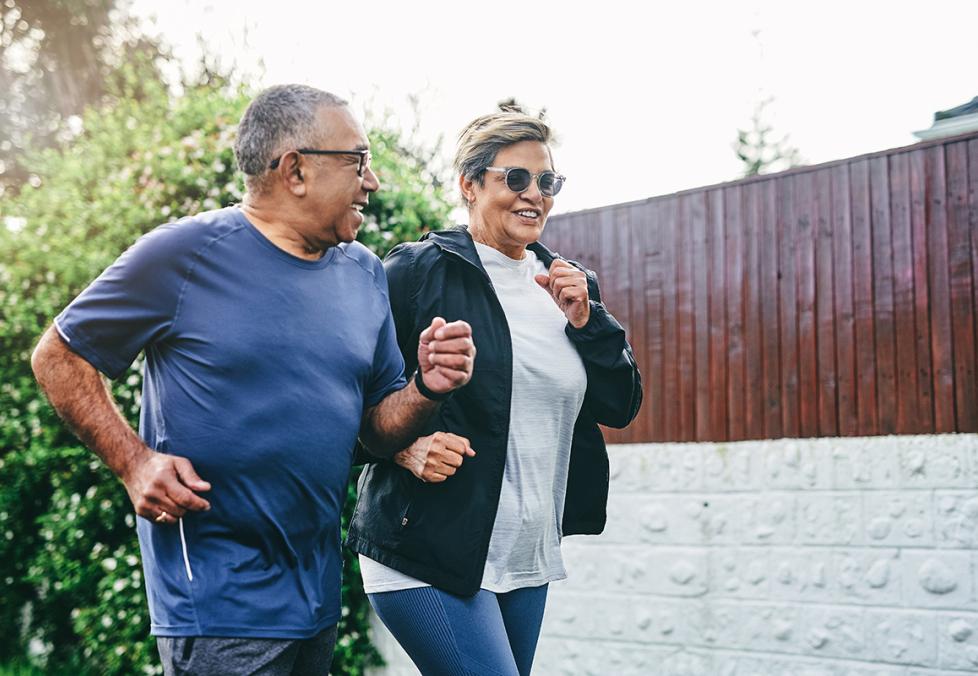
Two pairs and a free, quality eye exam for just $79.95
Everything you need to know to take care of your eyes — for life.

About 12 million Americans ages 40 and older have trouble seeing. When vision can’t be corrected with eyeglasses, contact lenses, medications, or surgery, it’s often referred to as low vision. At that point, it can get really hard to do everyday tasks.
But even before you hit 20/70 vision — which is the point at which a person is considered to have low vision — it can be all too easy to pull back from your familiar routines. You might avoid reading books or looking at your social media accounts, for example. You might also start to limit your social calendar or avoid favorite pastimes.
But no matter what your eyeglasses prescription is, you should be able to do the activities you love. You may just need to get a little creative.
“I think there’s almost always a workaround: a vision aid, tool, tip, or resource that can help you do what you want to do,” says Julie Martin Blake, O.D. She’s an optometrist at America’s Best Contacts & Eyeglasses in Greater Birmingham, Alabama. “All you need is the motivation to find and try them.”
These tips from Dr. Blake are a great place to begin.
Have questions about your eye health or vision? Your America’s Best optometrist is here to help. Click here to find an exam time that fits your schedule!
When’s the last time you had an eye exam? If you’re not sure — or it’s been a year or more — schedule one ASAP.
Your eyes are connected to the rest of your body through blood vessels and nerves. Some conditions such as diabetes or heart disease can lead to vision problems if left unchecked. Your eye doctor can spot any signs of potential issues at your annual eye exam.
With most health issues, the sooner you start treatment, the better the outcome. That’s true for low vision too. Just be sure to get your eye doctor’s okay and advice before increasing your activity level.
Get all the tests and checks your other health care providers recommend, too. Let both your eye doctor and other members of your health care team know if you struggle to follow your treatment plan (say, for example, you can’t open pill bottles, or you can’t see well enough to cook healthy meals).
They can adjust your plan or offer tips to make it doable. Eating right, getting enough sleep, and taking care of your health are key to finding the energy to be more active.
Annual eye exams are even more important as vision starts to fade — even if there’s nothing more that can be done to correct your vision. That’s because your optometrist can help you preserve and maximize your remaining eyesight.
Some optometrists are also certified low-vision specialists. (Your optometrist can also refer you to one.) They offer care beyond prescribing contacts or glasses, and they have the inside scoop on the tools, treatments, and resources made just for people like you.
Whenever you see a new doctor:
“One of the first things I ask patients is, ‘Do you have any visitors? Any family or friends who can take you out and do things with you?’” Dr. Blake says. “People want to help. Reaching out to them can help you open up and feel more motivated to do things.”
The key here, she adds, is to let them know what you’re going through and how they can help. That may include acting as:
A driver. If transportation to and from an event, the gym, or anywhere else is a barrier, ask loved ones if they can give you a ride. They may be happy to see a bit more of you and catch up during the ride.
And if they can’t always make the trip with you, they may be able to help you find local organizations that arrange transportation for those with low vision. Two options with search tools:
A sighted guide. You hold their elbow as you both walk, whether that’s inside a mall or outside on a flat running track. This allows you to feel how their body is shifting so that you can know where to step next. A sighted guide should always ask first before taking your arm.
A verbal coach. Ask your buddy to tell you what’s coming up — a curb, a turn in the path, and so on — with lots of detail. For example, “In about three steps we’re coming to a set of five stairs going downward. The railing is on your right.”
A motivator. Just knowing someone is waiting to walk or work out with you can help inspire you to stick to your plan. Keep in mind that you’re also helping them add more activity to their day, which is good for their health too. So really, you’re helping each other.
“I had a patient with low vision whose friend got a tandem (two-seater) bicycle so they could ride together,” says Dr. Blake. “You might be surprised at how much people want to help.”
Dr. Blake’s top advice for increasing activity is to get outside on nice days. “The brighter the sunlight, the better people with low vision can see,” she says. “The ultraviolet light boosts your mood, and the vitamin D helps your immune system.”
Before you head outside, you’ll want to make sure you have the right:

Two pairs and a free, quality eye exam for just $79.95
When you’re ready for a more formal workout, joining a gym can help you ease into it safely. Not only do gyms offer a variety of options, but they also have people who can help you get around and motivate you to keep coming back.
Check out a few gyms until you find the best fit. Beyond friendly staff and good maintenance of equipment and facilities, ask if they offer anything special for people with low vision. Some things to address:
Fitness guidelines for Americans note that standing more and sitting less is a good goal for everyone. While sitting may still feel safer, there are lots of ways to make it easier to get up and about at home. And finding devices to help you read and do seated activities (such as puzzles or food prep) also keeps your mind active.
Some tips for:
Whatever you do, don’t wait another minute to seek help finding the resources and tools to help you live your best life.
“All too often, people let their isolation go on for months or even years because of vision loss,” Dr. Blake says. Remember, she adds, that people in health care and fitness — and your inner circle — want you to make the most out of every day.